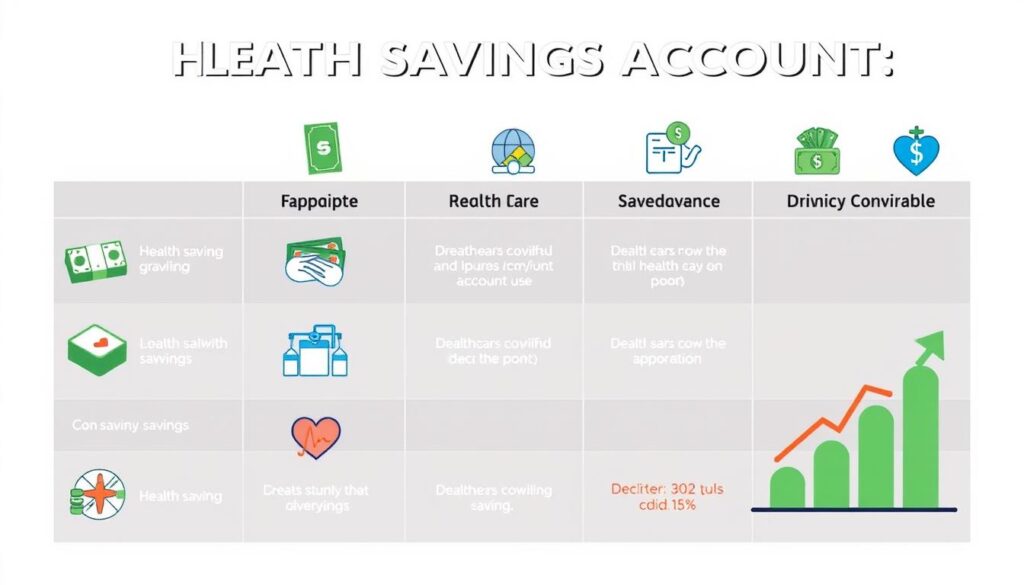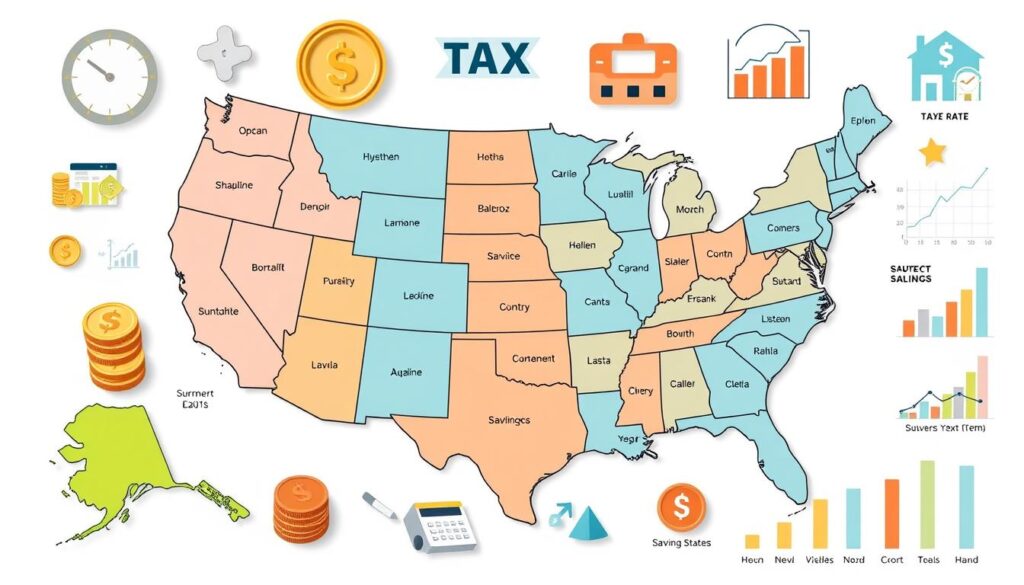As the whispers of tax season approach, you may find yourself reflecting on the past year and wondering how to enhance your financial landscape. It’s often easy to overlook the importance of tax strategies in your broader financial plan, but small adjustments can lead to significant savings. Have you considered how understanding the nuances of tax optimization can lead to more money in your pocket? The truth is, every decision you make has the potential to impact your savings, whether through contributions to retirement accounts or by leveraging deductions you might not even know about. In a world where every dollar counts, employing smart tax saving tips can be not just beneficial, but essential12.
Key Takeaways
- Understanding tax strategies is crucial for maximizing your savings.
- Tax optimization can significantly impact your financial health.
- Utilizing various tax saving tips can enhance your overall savings.
- Contributions to retirement accounts can be a powerful tax strategy.
- Awareness of potential deductions can result in unexpected savings.
Understanding Tax Strategies
Tax strategies play a crucial role in your overall financial health. They encompass various methods to reduce your taxable income while aiming to maximize potential refunds. Understanding tax planning and tax minimization techniques allows you to navigate the complex tax landscape efficiently. You should be aware of these strategies throughout the year, not just during tax season, to optimize your budgeting and financial decisions.
What Are Tax Strategies?
Tax strategies refer to various approaches employed to minimize tax liabilities legally. Examples include increasing contributions to retirement accounts, utilizing tax credits, and maximizing deductions. When executed correctly, these strategies can lead to significant savings. For instance, in 2024, employer contributions to retirement accounts can amount to $23,000 in a 401(k) or 403(b) plan, plus an additional $7,500 for individuals aged 50 or older3. Understanding these methods is essential for effective tax planning.
Why You Should Care About Them
A robust understanding of tax strategies can lead to greater financial stability. Utilizing effective tax planning enables you to keep more of your hard-earned money. For instance, tax deductions can reduce taxable income while tax credits provide a direct dollar-for-dollar reduction in your tax bill4. Keeping records of your financial activities and regularly reviewing your tax situation allows for proactive adjustments. A simple adjustment of your W-4 form can control how much tax is withheld from your paycheck, impacting your overall cash flow.

| Strategy | Description | Example |
|---|---|---|
| Retirement Contributions | Contributing to retirement plans can lower your taxable income. | Maximizing 401(k) contributions |
| Tax Credits | Dollars off your tax bill for certain expenses. | Child Tax Credit amounts to $2,000 per qualifying child in 20243. |
| Health Savings Accounts (HSAs) | Tax-advantaged accounts to cover healthcare costs. | Maximum deductible contribution for 2024 is $4,150 for individuals3. |
Know Your Tax Brackets
Understanding tax brackets is crucial for employing effective tax efficiency strategies. The U.S. federal income tax system is progressive, meaning that as your income increases, so does your tax rate. In 2024, the federal income tax rates include 10%, 12%, 22%, 24%, 32%, 35%, and 37%567. For instance, single filers face rates from 0% up to $609,351 or more, while married couples filing jointly have a threshold starting from $0 to $731,201 or more5.

How Tax Brackets Work
The tax brackets operate in a tiered structure, where marginal tax rates apply to specific portions of income. For example, single filers incur a 10% tax rate on income up to $11,600, whereas those making over $609,350 are taxed at 37%6. This system often leads to misinterpretation; many believe all income is taxed at the highest rate applicable. Familiarity with these brackets enables you to utilize tax avoidance tactics, such as strategically timing income recognition, ensuring that you stay within a lower tax rate bracket when feasible.
Tips to Optimize Your Bracket
To make the most of your tax situation, consider several strategies:
- Contribute to retirement accounts like 401(k)s or traditional IRAs, which can reduce taxable income by up to $7,000 for individuals.
- Utilize the cash method of accounting to better time income and business expenses.
- Engage in income averaging if you are a farmer or fisherman, allowing you to smooth income over a three-year period.
- Take advantage of deductions and credits which can lower your taxable income and optimize your position within the brackets.
These techniques enhance your tax efficiency and overall financial health, making it essential to stay informed about your tax obligations and strategies7.
Deductions vs. Credits
Understanding the difference between tax deductions and tax credits is crucial for effective tax planning. While both of these tools can lower your tax liability, they function differently. Tax deductions reduce your taxable income, which lowers the amount of income that you need to pay taxes on. In contrast, tax credits provide a direct reduction of the taxes owed, giving you a dollar-for-dollar offset against your tax bill. For example, a $1,000 tax credit reduces a tax bill by $1,000, regardless of your tax bracket8.
Key Differences Explained
The distinction between tax deductions and tax credits lies in how they affect your total tax responsibility. Tax deductions decrease your taxable income, leading to tax savings based on your given tax rate. For instance, if you are in a 22% federal tax bracket, a $1,000 deduction would save you $2208. Conversely, tax credits reduce your tax liability directly. Nonrefundable tax credits, like the Child Tax Credit, can bring your tax bill to zero, but you won’t receive any refund if the credit exceeds your total liability9. It’s important to recognize how different filing statuses affect the standard deduction, which for 2023 is $13,850 for single taxpayers and $27,700 for married couples filing jointly8.
Common Deductions You Might Miss
Many taxpayers overlook valuable tax deductions that can significantly impact their taxable income. Here are some commonly missed deductions:
- Student Loan Interest: You can deduct the interest paid on qualifying student loans, potentially saving money on your taxes.
- Home Mortgage Interest: Interest paid on mortgage loans can be deducted, which is beneficial for homeowners.
- Medical Expenses: If qualifying medical expenses exceed 7.5% of your adjusted gross income, these can be deducted.
- Charitable Donations: Contributions to qualified organizations can also be deducted from your taxable income.
Keep track of these potential deductions and consult a tax professional for personalized tax saving tips. Maximizing your deductions can lead to significant savings each tax season89.

Maximize Your Retirement Contributions
Maximizing your retirement contributions plays a crucial role in your long-term financial health. By investing in retirement accounts, you not only build your savings but also leverage the benefits of tax-efficient investing. Key retirement accounts, such as 401(k)s and IRAs, allow you to reduce your taxable income while saving for the future. Understanding the various types of retirement accounts and their specific advantages can significantly enhance your retirement savings strategy.
Benefits of Retirement Accounts
Retirement accounts provide several benefits that can help you save effectively for your later years. Contributions to accounts like 401(k)s, 403(b)s, and traditional IRAs reduce your taxable income dollar for dollar in the year you contribute, which can lower your tax liability significantly10. Furthermore, these accounts grow tax-deferred, allowing your investments to flourish without immediate tax implications. Roth IRAs and Roth 401(k)s are funded with after-tax dollars, enabling you to withdraw funds tax-free in retirement, provided you meet certain conditions10.
Types of Retirement Accounts
There are several types of retirement accounts, each with distinct features and benefits:
- 401(k) Plans: Employer-sponsored accounts that allow for both employee and employer contributions. They may offer a range of investment options.
- IRAs: Individual Retirement Accounts that come in various formats, including Traditional and Roth IRAs. Traditional IRAs provide tax-deductible contributions while Roth IRAs offer tax-free withdrawals.
- 403(b) Plans: Similar to 401(k)s but designed for employees of non-profit organizations. Contributions are made pre-tax, reducing your taxable income.
- HSAs: Health Savings Accounts are tax-advantaged accounts designed for medical expenses. They offer tax-free contributions, growth, and withdrawals for qualified medical expenses11.
Retirement Contributions Limitations
For the year 2024, the contribution limit for 401(k)s is set to rise, emphasizing the importance of staying updated on these figures to maximize your retirement savings strategy. The limits for traditional IRAs and Roth IRAs are also essential to consider, ensuring that you are contributing within these bounds to avoid potential penalties.

Utilize Health Savings Accounts (HSAs)
Health Savings Accounts (HSAs) are a powerful financial tool designed to help you save money for medical expenses. They are tax-advantaged accounts that can greatly benefit your financial strategy, especially when it comes to healthcare costs.
What is an HSA?
An HSA is a savings account that allows you to set aside money for medical expenses before taxes are applied. To qualify for an HSA, you must be enrolled in a high-deductible health plan. In 2024, contribution limits for HSAs are $4,150 for individual accounts and $8,300 for family plans, with an additional $1,000 allowance for taxpayers aged 55 or older12. Around 22 million Americans are currently enrolled in such plans eligible for HSAs13.
Tax Benefits of HSAs
HSAs offer triple tax advantages: tax-free contributions, tax-free growth of your savings, and tax-free withdrawals for qualified medical expenses13. Withdrawals for eligible medical expenses are explicitly defined as tax-free14. You can deduct contributions to your HSA within certain limits, allowing you to reduce your taxable income. Additionally, employer contributions to an HSA are excluded from your gross income, further expanding your tax shelters14.
The funds in your HSA can accumulate over time, with benefits such as the ability to invest in mutual funds13. You may use HSA funds for various medical expenses, including out-of-pocket costs and prescriptions. If you happen to withdraw funds for non-qualified expenses, remember that you may face a 20% penalty, particularly if you are under 651312.

| Year | Individual Contribution Limit | Family Contribution Limit | Catch-Up Contribution (Age 55+) |
|---|---|---|---|
| 2022 | $3,650 | $7,300 | $1,000 |
| 2023 | $3,850 | $7,750 | $1,000 |
| 2024 | $4,150 | $8,300 | $1,000 |
In summary, HSAs serve as an excellent way to prepare for future medical costs while enjoying substantial tax advantages. You can grow your healthcare savings significantly by utilizing the benefits HSAs offer13.
Leverage Your Homeownership
Homeownership can open doors to significant financial benefits, particularly through tax optimization techniques. By understanding and effectively utilizing the mortgage interest deduction and home equity financing options, you can greatly enhance your savings. This section delves into these critical aspects of homeownership.
Mortgage Interest Deduction
The mortgage interest deduction enables homeowners to deduct the interest paid on their mortgage from their taxable income, resulting in substantial tax savings15. This benefit is particularly advantageous if you’re in a higher tax bracket, as it can effectively lower your overall tax liability. Additionally, you may deduct certain home-related expenses, such as points paid on a mortgage loan and mortgage insurance premiums, further reducing your taxable income15. Furthermore, property tax deductions can provide significant savings, especially in regions with high property tax rates15.
Home Equity Financing
Understanding home equity financing opens up avenues for leveraging your investment. Homeowners can use equity from their homes to secure loans for further investments or personal expenses. This is especially beneficial as a larger down payment can lead to favorable mortgage terms and reduce monthly payments, potentially avoiding private mortgage insurance (PMI)16. Once you accumulate enough equity, you may also access capital gains exclusion from the sale of your primary residence, allowing you to exclude up to $250,000 (or $500,000 for married couples) in capital gains from taxable income15. Utilizing tax-deferred exchanges, or 1031 exchanges, can further allow you to defer capital gains taxes on investment property sales, enhancing your financial growth strategies through real estate15.

Take Advantage of Education Benefits
Education tax benefits are essential tools for students and employees looking to alleviate financial challenges associated with academic pursuits. Understanding available tax deductions for students and employer education assistance can lead to substantial savings at tax time. Familiarizing yourself with these options protects your wallet while investing in knowledge and skill enhancement.
Tax Deductions for Students
Students can benefit from several tax deductions, including the American Opportunity Tax Credit (AOTC), which phases out for married-joint filers with modified AGI between $160,000 and $180,000, and for other taxpayers between $80,000 and $90,00017. This credit can significantly reduce the cost of higher education by providing a refund for costs incurred. In addition, 40% of the AOTC is refundable, making it a particularly advantageous option for various financial situations17.
Employer Education Assistance
Employers can implement educational assistance programs under Section 127, allowing them to reimburse employees for costs up to $5,250 annually, tax-free18. Congress enacted legislation enabling these payments to cover not only tuition but also student loan debts, providing employees with an effective tax efficiency strategy18. Although costs of employer-provided education that prepare employees for new professions may be taxable, using a Section 127 plan can enhance your financial benefit from such opportunities18.

Small Business Tax Strategies
Understanding and implementing effective small business tax strategies is essential for entrepreneurs looking to optimize their financial situation. One key area of focus involves taking advantage of various business write-offs. These deductions play a significant role in reducing taxable income and can lead to substantial savings.
Write-Offs for Small Businesses
Small businesses have the unique opportunity to leverage business write-offs to enhance their tax efficiency. For instance, the IRS mileage allowance stands at 65.5 cents per mile for the 2023 tax year and will increase to 67 cents for 202419. Additionally, the deduction for new business equipment or machinery can reach up to 60% under the 2018 tax law, allowing you to recover significant investments19. Utilizing an accountable plan can further amplify your savings as it lets you deduct expenses without reporting reimbursements as taxable employee income.
Furthermore, taking advantage of the Small Business Health Care Tax Credit can offset costs related to employee health insurance20. This credit, which encompasses a substantial portion of premium costs, can be highly beneficial for small business owners. By properly documenting and understanding these deductions, your overall tax liability can decrease dramatically.
Choosing the Right Business Structure
The business structure you choose has a profound impact on your tax obligations. C-corporations face a 21% corporate income tax rate, which is applied to their earnings before distributing dividends or salaries, while S-corporations avoid this tax altogether20. This distinction is crucial when considering tax planning for entrepreneurs, as selecting the right structure can lead to significant tax advantages.
Engaging in tax strategies such as deferring income or accelerating deductions can further optimize your tax position. Deferring income to a later year allows you to manage your taxable income effectively, while accelerating deductions can minimize your current tax bill20. Exploring these options will put you in a better position to leverage your business’s financial potential.

Timing Your Income
Understanding the importance of income timing can not only enhance your financial strategy but also significantly impact your tax liabilities. By strategically timing your income, you can utilize tax avoidance tactics that help minimize your tax burden effectively.
When to Defer Income
Deferring income can often place you in a lower tax bracket, which may reduce your tax rate for the current year21. For cash basis businesses, delaying the receipt of customer payments or investment income until the new financial year can be beneficial22. Accrual basis entities may find it useful to postpone invoicing clients until after June 30 and accelerate expense recognition by incurring costs before the year ends22. Additionally, consider industries like Personal Services Income businesses that may have specific requirements around income timing22.
Strategies for Timely Income Recognition
To optimize your tax liability, it’s essential to incorporate deferred income strategies. For instance, contributing the maximum allowable amounts to retirement plans can effectively lower your Adjusted Gross Income (AGI)21. Another useful tactic includes prepaying expenses expected to be incurred in the following 12 months, resulting in reduced taxable income for the current year21. Moreover, implementing bunching deductions can help maximize your deductions in one year while minimizing them in the subsequent year21.

Tax-Loss Harvesting
Tax-loss harvesting is an effective investment tax strategy that involves selling investments at a loss to offset capital gains from other investments. This method can significantly contribute to capital gains tax reduction, especially when losses are strategically utilized. By applying this strategy, you can offset capital gains and reduce your taxable income, as losses up to $3,000 can be deducted against ordinary income if capital losses surpass capital gains2324. Understanding this approach can lead to substantial tax savings.
What Is Tax-Loss Harvesting?
Tax-loss harvesting allows you to strategically sell securities that have declined in value. This practice is advantageous since selling these assets can offset capital gains, potentially saving you a significant amount on taxes. For instance, individuals utilizing tax-loss harvesting could save about $7,000 at a 35% marginal tax rate25. Additionally, reinvesting the tax savings can greatly amplify your future returns; an annual reinvestment of $900 can potentially grow to around $35,000 over two decades25.
How to Implement This Strategy
To effectively implement tax-loss harvesting, you should regularly monitor your investment portfolio for underperforming assets. By doing this, you can proactively sell losing investments, making sure to follow the wash-sale rule, which prohibits repurchasing a substantially identical security within 30 days before or after the sale2524. This strategy is not applicable in tax-advantaged accounts like IRAs and 401(k)s, making it crucial for taxable accounts. Evaluating your tax position and financial goals will help refine your approach, especially during the year-end, when tax-loss harvesting is often more profitable with less market uncertainty24.

Understanding State Taxes
State taxes play a significant role in your overall financial landscape. The laws governing these taxes differ greatly from one state to another, impacting everything from individual income tax responsibilities to property taxes. It is crucial for effective state tax planning to understand these variations, especially if you engage in work or reside in multiple states.
Differences in State Tax Laws
Individual income taxes represent a substantial source of revenue for state governments. In 2021, they collected $504 billion from individual income taxes, making up 19 percent of their general revenue26. States exhibit distinct approaches to taxation. For instance, California derives 23 percent of its state and local general revenue from individual income taxes, the highest among the states26. On the other hand, states like New Hampshire rely on a phased-out taxation mechanism on interest and dividends, thereby contributing only about 1 percent of their revenue from individual income taxes26.
Planning for State Tax Obligations
Proper state tax planning is essential to navigate these differences and can safeguard you against unexpected tax liabilities. States impose varying tax rates; for example, the highest individual income tax rate in 2023 is 13.3 percent in California while states like Texas and Florida do not levy any individual income tax27. Additionally, understanding the tax implications by state can help you anticipate how much you owe. Many states align their definitions of taxable income with federal standards, which can simplify your planning26.

| State | Top Individual Income Tax Rate | Property Tax Rate |
|---|---|---|
| California | 13.3% | 0.76% |
| Texas | No Income Tax | 1.81% |
| Florida | No Income Tax | 0.83% |
| New York | 10.9% | 1.69% |
| New Jersey | 10.75% | 2.23% |
The Importance of Tax Planning
Tax planning plays a critical role in managing your finances effectively. Creating a robust tax plan can lead to significant savings and improved financial health. The four primary types of tax planning consist of federal income tax planning, retirement tax planning, estate tax planning, and small business tax planning28. By understanding these categories, you can gain insights into how to optimize your approach to minimize tax liabilities while maximizing your financial potential.
Creating a Tax Plan
Establishing an effective tax plan requires attention to detail and foresight. Good record-keeping is essential for effective tax planning29. You should structure your financial situation to minimize taxes while taking full advantage of available credits and deductions, which can have a significant impact on your overall financial health28. Tax deductions can lower your taxable income, enabling you to subtract certain expenses throughout the year28.
Reviewing Your Tax Strategy Annually
It is advisable to review your tax strategy at least once a year. You should remain proactive regarding changes in tax laws, as they can affect your planning and financial outlook29. This review allows you to assess and adjust your tax planning methods based on your evolving financial situation and goals. By optimizing your tax liability through planning, you can free up money for reinvestment back into your business or personal ventures29.

Working with Tax Professionals
Engaging with tax professionals can significantly elevate your approach to managing taxes, especially when navigating the intricacies of the tax code. Many individuals find that the expertise of tax advisors enhances their ability to strategize effectively, ultimately leading to more substantial savings and compliance with regulations. According to the Thomson Reuters Institute’s 2024 State of Tax Professionals Report, the demand for skilled tax professionals has surged, prompting firms to invest significantly in recruitment and retention strategies30.
Why You Might Need a Tax Advisor
Having a tax advisor can be crucial, especially during tax season when complexities multiply. As many tax preparers find themselves overwhelmed, focusing on securing professional tax assistance ahead of time is advisable. Tax firms have recognized this need, shifting towards offering comprehensive advisory services instead of merely compliance-oriented work, enhancing client satisfaction and distinguishing themselves in the competitive market30.
Qualities to Look for in an Advisor
When selecting a tax professional, consider their qualifications, experience, and ability to understand your unique financial situation. Ideally, your advisor should be knowledgeable about the latest tax laws and strategies that can impact your bottom line. With average tax return completion taking Americans around 24.2 hours, having informed guidance can alleviate stress and lead to more effective tax planning and financial decisions31.
FAQ
What are some effective tax strategies to enhance my savings?
How can I better understand my tax brackets?
What are the differences between tax deductions and tax credits?
What benefits do retirement accounts offer?
How can HSAs serve as tax shelters?
What are the tax advantages of homeownership?
How can education-related tax benefits help me save?
What specific tax strategies can small business owners utilize?
What does tax-loss harvesting entail?
How do state tax laws impact my overall tax obligations?
Why is it important to regularly review my tax strategy?
How can working with tax professionals benefit me?
Source Links
- https://www.schwab.com/learn/story/year-end-portfolio-checkup-5-tax-smart-tips – Tax-Saving Moves You Can Make Before Year-End
- https://www.merrilledge.com/article/tax-smart-investment-strategies-you-should-consider – 6 Tax-Efficient Investing Strategies For Tax-Smart Investors
- https://www.investopedia.com/articles/personal-finance/032116/top-6-strategies-protect-your-income-taxes.asp – 6 Strategies to Lower Your Tax Bill
- https://www.nerdwallet.com/article/taxes/tax-planning – Tax Planning: 7 Tax Strategies to Consider – NerdWallet
- https://blog.taxact.com/avoid-higher-tax-bracket/ – 5 Ways to Avoid Bumping Your Income into a Higher Tax Bracket
- https://turbotax.intuit.com/tax-tips/irs-tax-return/what-is-my-tax-bracket/L3Dtkab8G – What is My Tax Bracket?
- https://www.nerdwallet.com/article/taxes/federal-income-tax-brackets – 2024-2025 Tax Brackets & Federal Income Tax Rates – NerdWallet
- https://www.nerdwallet.com/article/taxes/tax-credit-vs-tax-deduction – Tax Credit vs. Tax Deduction – NerdWallet
- https://www.investopedia.com/ask/answers/071015/what-difference-between-writeoff-and-deduction.asp – Tax Write-Off vs. Tax Deduction vs. Tax Credit: What’s the Difference?
- https://www.schwab.com/learn/story/how-to-plan-ahead-taxes-retirement – How to Plan Ahead for Taxes in Retirement
- https://www.kiplinger.com/retirement/tax-strategies-to-preserve-retirement-savings – Five Tax Strategies to Preserve Your Retirement Savings
- https://www.ameriprise.com/financial-goals-priorities/insurance-health/benefits-health-savings-accounts – The triple tax benefits of health savings accounts
- https://www.ml.com/articles/health-savings-accounts-explained.html – Health Savings Account (HSA) Benefits and Details Explained
- https://www.thetaxadviser.com/issues/2022/apr/how-hsa-can-be-viewed-as-flexible-tax-favored-investment.html – How an HSA can be viewed as a flexible tax-favored investment
- https://www.claytonandclayton.com/blog/the-tax-advantages-of-homeownership-leveraging-deductions-for-financial-gains.html – Leveraging Deductions for Financial Gains
- https://www.onepresidentialmtg.com/post/leveraging-your-tax-return-a-smart-strategy-for-home-mortgage-down-payments – Leveraging Your Tax Return: A Smart Strategy for Home Mortgage Down Payments
- https://www.zinnerco.com/hs-fs/hub/141641/file-2035042472-pdf/documents/tax_strategies_for_college_students_of_higher_income_taxpayers_hermes.pdf – PDF
- https://www.fustcharles.com/news/tax-breaks-for-employer-paid-education-expenses – Tax Breaks for Employer-Paid Education Expenses
- https://blog.cmp.cpa/small-business-tax-strategies – 19 Small Business Tax Planning Strategies to Slash Your Tax Bill [2024]
- https://www.cnb.com/business-banking/insights/small-business-tax-planning-strategies.html – Tax Planning Strategies for Small Businesses | City National Bank
- https://greengrowthcpas.com/year-end-tax-strategies-deferring-income-accelerating-expenses/ – Tax Strategies: Year-End Income Deferral & Expense Boost
- https://www.dfkeveralls.com/insights_post/what-to-do-with-your-profit-timing-income-and-expenses-for-tax-efficiency/ – Timing Income and Expenses for Tax Efficiency
- https://corporate.vanguard.com/content/corporatesite/us/en/corp/articles/methods-maximize-tax-loss-harvesting-success.html – Methods to maximize tax-loss harvesting success
- https://www.investopedia.com/articles/taxes/08/tax-loss-harvesting.asp – How Tax-Loss Harvesting Works for Retail Investors
- https://www.schwab.com/learn/story/how-to-cut-your-tax-bill-with-tax-loss-harvesting – How to Cut Your Tax Bill with Tax-Loss Harvesting
- https://taxpolicycenter.org/briefing-book/how-do-state-and-local-individual-income-taxes-work – How do state and local individual income taxes work?
- https://www.schwab.com/learn/story/taxation-nation-which-state-taxes-matter-to-you – Taxation Nation: Which State Taxes Matter to You?
- https://www.bctax.com/blog/the-importance-of-tax-planning/ – Is Tax Planning Worth It? Why Is Tax Planning Important?
- https://deleonandstang.com/insights/tax-planning-importance – Why Tax Planning Is Important — DeLeon & Stang
- https://www.thomsonreuters.com/en-us/posts/tax-and-accounting/tax-firms-growth-strategies/ – What strategies are tax firms considering to promote growth? – Thomson Reuters Institute
- https://andersonadvisors.com/blog/professional-tax-strategies-work-with-tax-expert/ – Professional Tax Strategies: Why it Pays to Work with a Tax Expert









